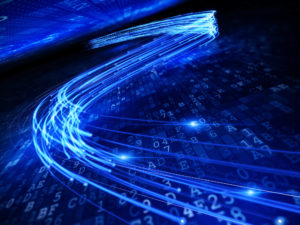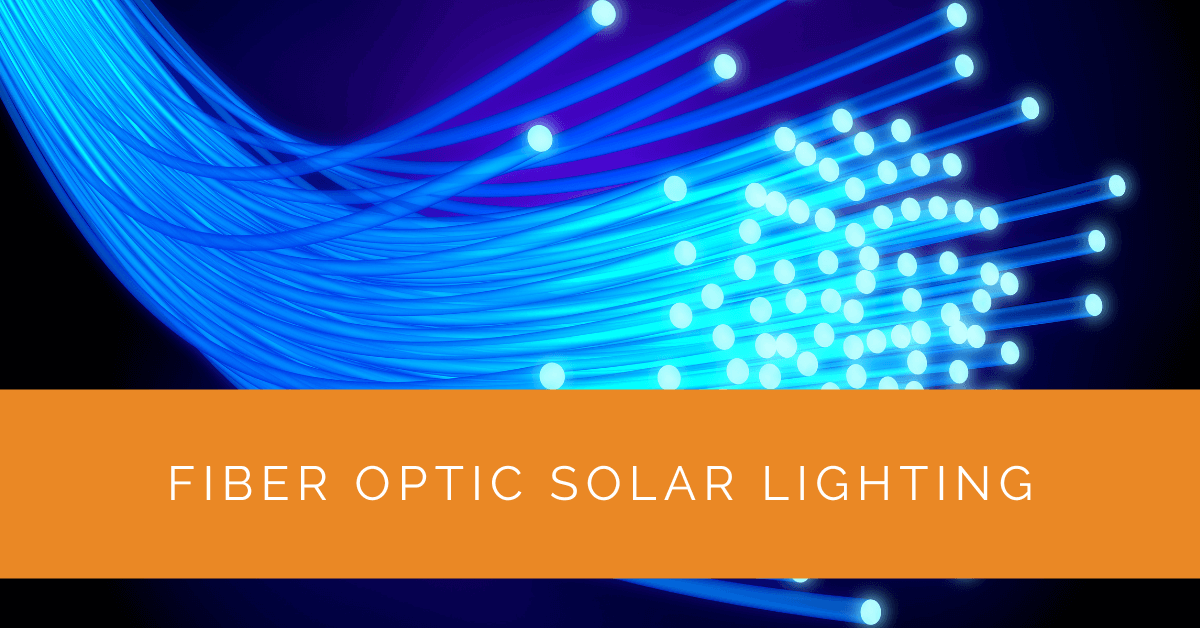Solar lighting has emerged as a sustainable and energy-efficient alternative to traditional electrical lighting systems. Solar lighting provides illumination without relying on grid electricity by harnessing the sun’s power. In this article, we delve into the world of fiber optic solar lighting, an innovative technology that brings the benefits of solar energy and fiber optics together. Let’s explore how this system works, its components, advantages, applications, installation process, and more.
Contents
- 1 Key Takeaways
- 2 How Fiber Optic Solar Lighting Works
- 3 Components of a Fiber Optic Solar Lighting System
- 4 Advantages of Fiber Optic Solar Lighting
- 5 Applications of Fiber Optic Solar Lighting
- 6 Installation and Maintenance of Fiber Optic Solar Lighting
- 7 Expert Insights From Our Solar Panel Installers About Fiber Optic Solar Lighting
- 8 Experience Solar Excellence with Us!
- 9 Conclusion
Key Takeaways
- Fiber optic solar lighting combines solar energy and fiber optic technology to provide sustainable and efficient illumination.
- The advantages of fiber optic solar lighting include energy efficiency, flexibility in design, safety, long lifespan, low maintenance, and natural and high-quality lighting.
- Fiber optic solar lighting finds applications in indoor and outdoor spaces and artistic installations, offering versatile and environmentally friendly lighting solutions.
How Fiber Optic Solar Lighting Works
Fiber optic solar lighting combines solar panels and fiber optic cables. Here’s how it works:
Solar Panel: Capturing Solar Energy
Solar panels, typically installed on rooftops or open spaces, capture sunlight and convert it into electrical energy. These panels consist of photovoltaic cells that generate direct current (DC) electricity when exposed to sunlight.
Transmitting Light through Fiber Optic Cables
Instead of using electrical wires, fiber optic cables are employed to transmit light. These cables are made of transparent fibers that guide light through total internal reflection. The light enters one end of the fiber optic cable, travels along the length, and emerges at the other, ensuring efficient and loss-free transmission.
Light Source: LED or Natural Light
A light source emits light at the end of the fiber optic cable. Depending on the specific lighting requirements, this can be either a light-emitting diode (LED) or natural light. LED light sources are commonly used due to their efficiency, long lifespan, and versatility in producing different types of light.
Light Fixtures: Dispensing Light
Light fixtures, also known as illuminators, are responsible for dispersing the light emitted by the light source. These fixtures are strategically placed in desired areas to provide illumination. The fiber optic cables are connected to the light fixtures, allowing the light to be dispersed throughout the space.
Components of a Fiber Optic Solar Lighting System
A fiber optic solar lighting system consists of several key components that work together to provide sustainable and efficient illumination:
Solar Panel
The solar panel serves as the energy collector, converting sunlight into electricity. It comprises multiple photovoltaic cells that generate DC power when exposed to sunlight. The size and capacity of the solar panel depend on the lighting requirements and available sunlight in the area.
Fiber Optic Cable
The fiber optic cable is the medium through which light travels from the light source to the light fixtures. These cables are made of transparent fibers that guide the light using total internal reflection. Fiber optic cables are lightweight, flexible, and capable of transmitting light over long distances without significant losses.
Light Source
The light source, usually an LED or natural light, emits the light transmitted through the fiber optic cable. LEDs are widely used due to their energy efficiency, durability, and ability to produce different colors and intensities of light. Natural light sources, such as sunlight, can also be utilized for certain applications.
Light Fixtures
Light fixtures, also known as illuminators, receive the light transmitted through the fiber optic cables and disperse it throughout the desired area. These fixtures can be designed in various shapes and sizes to suit indoor and outdoor lighting requirements. Light fixtures play a crucial role in achieving the desired illumination and aesthetics of the space.
Control System
A control system allows for managing the fiber optic solar lighting system. It enables control over the intensity and timing of the light, allowing users to customize the lighting according to their needs. The control system can be manual or automated, depending on the desired flexibility level and control.

Advantages of Fiber Optic Solar Lighting
Fiber optic solar lighting offers several advantages over traditional lighting systems. Let’s explore the key benefits of using fiber-optic solar lighting:
Energy Efficiency and Sustainability
One of the major advantages of fiber optic solar lighting is its energy efficiency. Harnessing solar power reduces reliance on grid electricity, leading to significant energy savings. LEDs as light sources further enhance energy efficiency, as LEDs consume less power than traditional light bulbs. Additionally, fiber optic cables transmit light without electrical resistance, resulting in minimal energy losses during transmission.
Versatility and Flexibility in Design
Fiber optic solar lighting systems offer great versatility in design. The flexibility of fiber optic cables allows for easy installation in various spaces, including indoor and outdoor areas. These cables can be routed through tight spaces, around corners, and even underwater, enabling lighting in unconventional locations. This flexibility in design makes fiber optic solar lighting suitable for a wide range of applications, from residential and commercial spaces to art installations.
Zero Electrical Hazards
Since fiber optic solar lighting systems rely on solar energy and transmit light optically, they eliminate the risk of electrical hazards. The absence of electrical wiring throughout the lighting system reduces the potential for electrical shocks or short circuits. This makes fiber optic solar lighting a safer option, especially in wet or outdoor environments where electrical safety is paramount.
Long Lifespan and Low Maintenance
Fiber optic cables have a long lifespan, often lasting for decades without degradation in performance. They are resistant to corrosion, environmental factors, and electromagnetic interference. Similarly, LEDs used as light sources have a significantly longer lifespan than traditional light bulbs. This extended lifespan results in lower maintenance costs and reduced replacement frequency, making fiber optic solar lighting a cost-effective long-term solution.
Natural and High-Quality Lighting
Fiber optic solar lighting systems provide natural and high-quality illumination. Natural light sources, such as sunlight, create a pleasant and inviting atmosphere, particularly in indoor spaces. Fiber optic cables transmit light without UV or IR emissions, ensuring the illuminated areas remain comfortable and free from excessive heat. The ability to control light intensity further enhances the lighting quality, allowing users to create the desired ambiance.
Applications of Fiber Optic Solar Lighting
Fiber optic solar lighting finds diverse applications in various settings. Let’s explore some common uses:
Indoor Lighting
Fiber optic solar lighting is ideal for indoor spaces with limited or unavailable natural sunlight. It can illuminate residential areas, offices, museums, and other indoor environments. By capturing sunlight during the day and transmitting it through fiber optic cables, indoor spaces can benefit from natural and energy-efficient lighting throughout the day.
Outdoor Lighting
Outdoor areas can also benefit from fiber optic solar lighting. Pathways, gardens, parks, and public spaces can be illuminated with solar-powered lighting systems, enhancing safety and aesthetics. The flexibility of fiber optic cables allows for creative lighting designs and the highlighting of architectural features or landscapes.
Artistic Installations
Fiber optic solar lighting lends itself well to artistic and decorative installations. Combining solar power and fiber optics allows artists and designers to create unique light displays, sculptures, and interactive installations. These installations can be found in public spaces, art galleries, and exhibitions, captivating viewers with their innovative use of light.
Installation and Maintenance of Fiber Optic Solar Lighting
Proper installation and maintenance are essential for the optimal functioning of fiber-optic solar lighting systems. Here are some key considerations:
Lighting Design and Planning
Before installation, it’s crucial to assess the lighting requirements and design the system accordingly. Factors such as desired light intensity, coverage area, and specific lighting needs should be considered. Professional assistance can ensure that the system is designed to meet your specific requirements.
Solar Panel Placement
The solar panel should be positioned in a location that receives maximum sunlight throughout the day to optimize energy generation. It should be placed in an area with minimal shading and oriented toward the sun. Tilt angles and tracking systems can be used to maximize solar exposure and energy capture.
Fiber Optic Cable Routing
Careful planning and routing fiber optic cables are crucial for efficient lighting distribution. Cables should be routed to reach the desired light fixtures, considering the distance, bends, and obstacles. Proper cable management ensures optimal light transmission and minimizes signal loss or degradation.
Fixture Installation
Light fixtures should be strategically placed to achieve the desired lighting effects and coverage. Fixtures should be securely installed in suitable locations for indoor or outdoor applications. The fixtures should be protected from water ingress and other environmental factors to ensure longevity and performance.
Maintenance and Cleaning
Regular maintenance is important to ensure the continued performance of the fiber optic solar lighting system. Solar panels should be cleaned periodically to remove dust, dirt, and debris that may hinder solar energy absorption. Fiber optic cables and light fixtures should also be inspected and cleaned to maintain optimal light transmission and prevent blockages or disruptions.
Expert Insights From Our Solar Panel Installers About Fiber Optic Solar Lighting
Fiber optic solar lighting offers a unique combination of energy efficiency and design flexibility. By harnessing solar power and transmitting light through fiber optics, we can illuminate spaces with natural light while minimizing energy consumption.
Senior Solar Installer
The integration of fiber optic technology with solar panels provides an innovative solution for lighting, especially in areas where conventional wiring might be challenging. It’s a great way to bring sustainable lighting to diverse environments.
Lead Solar Technician
With fiber optic solar lighting, we can achieve high-quality, safe illumination that requires minimal maintenance. This technology is ideal for both indoor and outdoor applications, enhancing aesthetics and functionality.
Solar Project Manager
Experience Solar Excellence with Us!
Trust in Solar Panels Network USA, where our seasoned experts deliver top-quality solar solutions for homes and businesses nationwide. With a legacy of countless successful installations and a commitment to sustainable energy, we’re your reliable partner in the solar journey. Ready for a brighter, eco-friendly future? Call us now at (855) 427-0058 and harness the power of the sun!
Conclusion
Fiber optic solar lighting systems offer a sustainable, energy-efficient, and versatile solution for various lighting needs. By combining the power of solar energy with the benefits of fiber optics, these systems provide natural and high-quality illumination in indoor and outdoor spaces. With their long lifespan, low maintenance requirements, and flexibility in design, fiber optic solar lighting systems are an attractive option for those seeking reliable and environmentally friendly lighting solutions. Embrace the advancements of fiber optic solar lighting and illuminate your space with the sun’s power.
About the Author
Solar Panels Network USA stands at the forefront of solar energy solutions, driven by a team of seasoned solar engineers and energy consultants. With over decades of experience in delivering high-quality solar installations and maintenance, we are committed to promoting sustainable energy through customer-centric, tailored solutions. Our articles reflect this commitment, crafted collaboratively by experts to provide accurate, up-to-date insights into solar technology, ensuring our readers are well-informed and empowered in their solar energy decisions.

